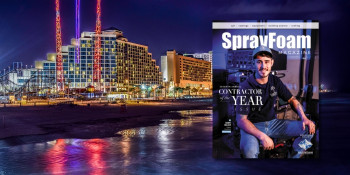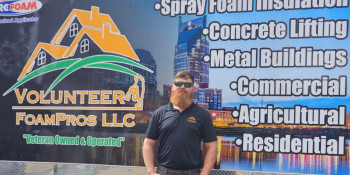Q&A Forums
attic 'hot-roof' in cold climate Post New Topic | Post Reply
| Author | Comments |
|---|---|
|
Andre Jord
Posted: Jul 31, 2013 10:18 AM
|
attic 'hot-roof' in cold climate
I have an attic that I discovered when renovating my home - it was built below a fairly low-slope (shingled) roof. There's no ventilation, roof vents or soffit intakes. Currently, the rafters are filled with four inches of wood shavings mixed with lime (to keep the bugs out, I'd guess). My concern is that if I were to spray foam the roof decking itself, any warm air that goes up into the attic would just stay there and rot the ceiling, even if it's not condensating on the roof deck... I imagine this is done often - but is it ok for a cold (NW Ontario) climate? |
|
Andre Jord
Posted: Jul 31, 2013 10:21 AM
|
FOrgot to add - I'm getting the sawdust out now, and will not be adding a vapor barrier to the ceiling side.. |
|
jimcoler
I have over 10 years of experience specifying and installing open and closed cell spray foam. I've sold my business but I'm still selling for the new owners and consulting on large and custom specific jobs. I've expanded my knowledge into t Posted: Jul 31, 2013 01:43 PM
|
Just to understand, you have a roof below another roof with an airspace in between and then you have the sawdust under the lower roof - Is this correct? I would say that you have little to no concerns with the moisture once you spray the attic underside with foam. This could mean the underside of the lower roof or the underside of the upper roof. If you spray the foam to the underside of the lower roof, then you would need to make sure that the air space between the two roofs is well ventilated with adequate intake and exhaust ventilation. You're correct that you won't have any condensation because the entire surface would be a warm surface and it can't condense unless it's warm air coming in contact with a cold surface! Warm air in contact with a warm surface is not an issue and warm air in contact with warm wood is still no issue! So, anything inside the foam envelope is considered warm and controlled. So, no problem and you'll be fine with spraying the roof deck! Jim |
|
mason
Posted: Aug 01, 2013 01:27 PM
|
You haven't said what type foam or how thick. Two pretty important factors. In cold environments, a sufficient thickness of closed cell spray foam would suffice so long as there are warm seasons as well as cold seasons. When using open cell foam, a vapor retarder coating or membrane is used over the foam in cold climates. Check out SPFA guidelines on insulating unvented attics for more information at sprayfoam.org. |
|
Andre Jord
Posted: Aug 01, 2013 01:32 PM
|
It's an attic above the ceiling, with the roof deck about four or five feet above that at the highest point, tapering down to nothing over the run of about fifteen feet. The roof joists are 1950s 2x6 - so about 6". I was thinking of either gluing up 2" of XPS foam and then encapsulating that in sprayfoam up to the joist thickness, or just sprayfoaming directly to the roof decking. My thought was the XPS would make later roof repairs easier, and also insulate the shingles from the high heat of the applied spray-foam. The climate we're in is cold, cold, cold winters and the summers can get to 32celcius quickly... SO my options are either XPS covered in sprayfoam (either 2 part pro-applied or self-applied tigerfoam), or entirely pro-applied. Closed cell, about 5 inches thick. The only other concern is there's a chiney that runs through - but it has a liner, so it can't get that hot, I'd think.. |
|
mason
Posted: Aug 05, 2013 03:08 PM
|
You don't have to worry about the "high heat" of the spray foam, Shingle temperatures can exceed 200 degrees on a 95 degree day (depending on the color, aspect, orientation and other factors) without any influence from other products. The foam temperature during application will typically be less than 200 degrees F. Now the curing foam could melt the XPS which only has a melting temperature around 150 degrees F if it is sprayed too thick in one lift. Also, the XPS would need to be fastened securely or there could be movement of the spray foam. I have seen this happen in other applications when installing spray foam over either XPS or EPS. It would be a more secure installation just spraying directly to the underside of the roof deck. |
|
Andre Jord
Posted: Aug 20, 2013 12:03 PM
|
My only concern with that route was that re-roofing and replacing damaged boards would both be A) expensive and B) no longer adhered to the foam... That's the reason I was thinking sprayfoam over XPS... My ceiling is as such: / / /------ We're going to continue to have a ceiling at the bottom (i.e. not a cathedral ceiling)...I was mostly worried about moist air getting into the attic from the rest of hte house, and hanging out in the attic, as there'd be no easy way to diffuse quickly back through the ceiling without vents in the ceiling (not the roof)... I'm guessing you think that's not an issue? If so, I'll go for the direct to deck spray foam |





























